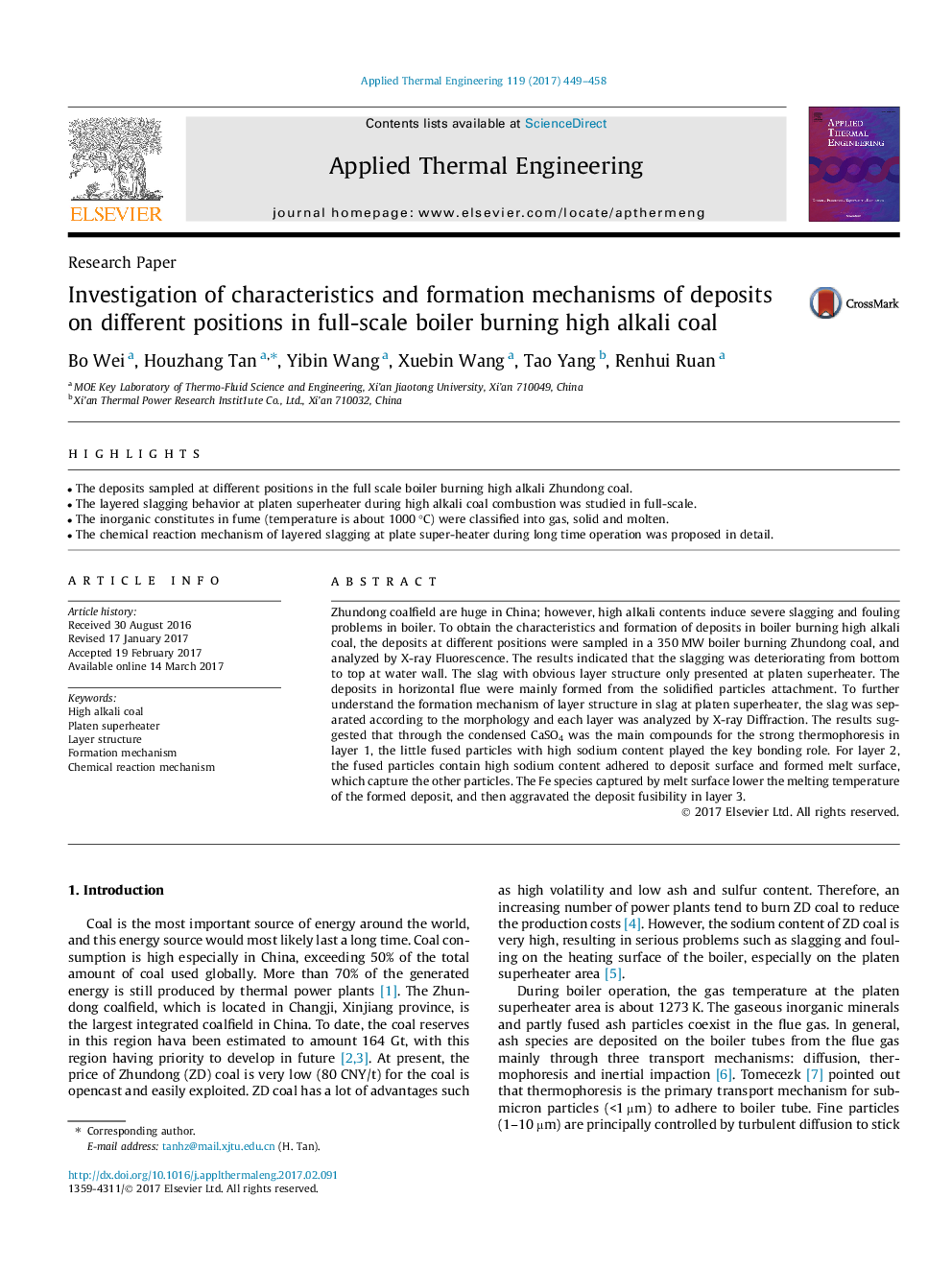| Article ID | Journal | Published Year | Pages | File Type |
|---|---|---|---|---|
| 4991306 | Applied Thermal Engineering | 2017 | 10 Pages |
Abstract
Zhundong coalfield are huge in China; however, high alkali contents induce severe slagging and fouling problems in boiler. To obtain the characteristics and formation of deposits in boiler burning high alkali coal, the deposits at different positions were sampled in a 350Â MW boiler burning Zhundong coal, and analyzed by X-ray Fluorescence. The results indicated that the slagging was deteriorating from bottom to top at water wall. The slag with obvious layer structure only presented at platen superheater. The deposits in horizontal flue were mainly formed from the solidified particles attachment. To further understand the formation mechanism of layer structure in slag at platen superheater, the slag was separated according to the morphology and each layer was analyzed by X-ray Diffraction. The results suggested that through the condensed CaSO4 was the main compounds for the strong thermophoresis in layer 1, the little fused particles with high sodium content played the key bonding role. For layer 2, the fused particles contain high sodium content adhered to deposit surface and formed melt surface, which capture the other particles. The Fe species captured by melt surface lower the melting temperature of the formed deposit, and then aggravated the deposit fusibility in layer 3.
Related Topics
Physical Sciences and Engineering
Chemical Engineering
Fluid Flow and Transfer Processes
Authors
Bo Wei, Houzhang Tan, Yibin Wang, Xuebin Wang, Tao Yang, Renhui Ruan,
